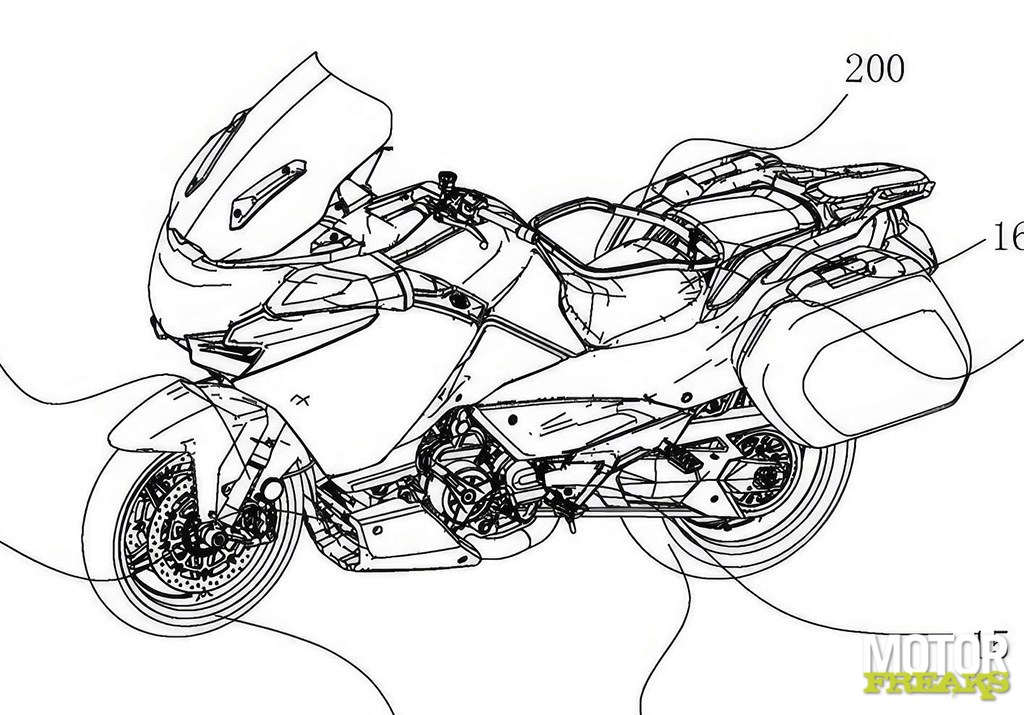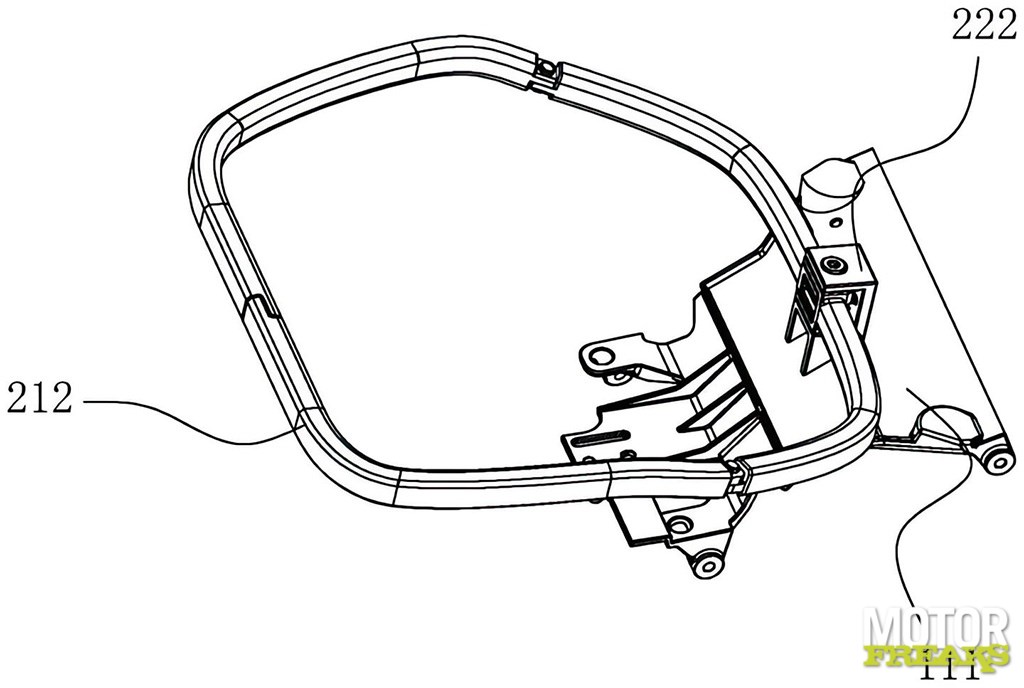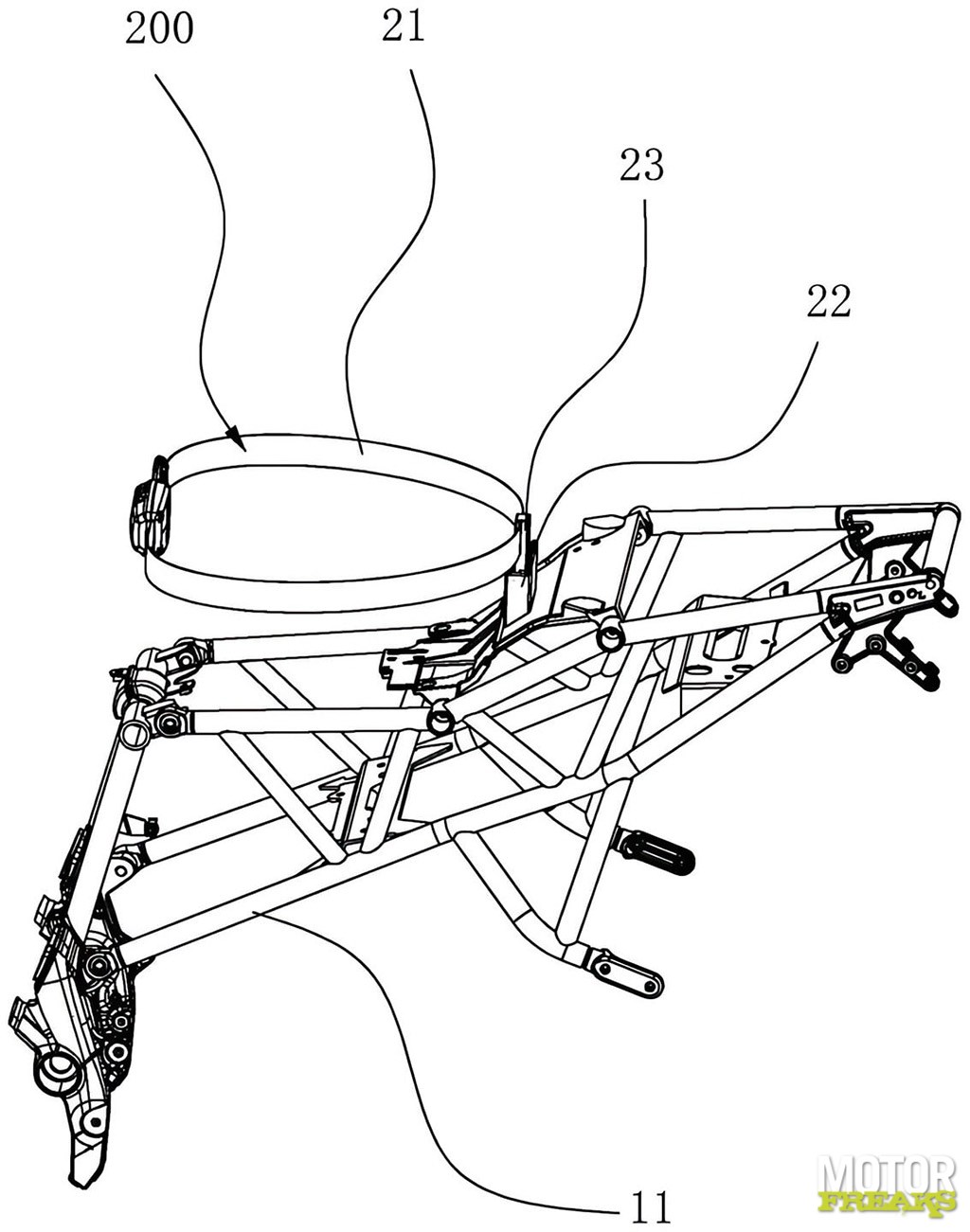BMW tried it once with the C1 scooter and that was (for several reasons) not exactly a success, but CFMOTO has now applied for a patent for a seat belt that at least on paper has been thought through much better. Whether it will ever come to fruition remains the question of course.

Seat belts and motorcycles don’t really mix. In a crash, you want to be as far away from a few hundred pounds of tumbling metal and plastic as possible, rather than strapped to it. Aside from BMW’s short-lived C1, which also had a roof and a safety cell around the rider, there haven’t been many attempts to strap riders to their bikes in the name of safety.
CFMOTO, however, has other ideas, and thanks to advances in technology, the idea of seat belts on bicycles may be worth revisiting. The Chinese company has filed a patent application for a system that keeps the rider on the bike only under specific conditions, allowing the bike to absorb energy from frontal impacts with hard objects and prevent you from being thrown from the bike, but release you in situations where the bike rolls over or a sideways force is applied during the accident.

The patent shows several variations on the same idea. The first uses a pair of rigid rods, one on each side of the rider, that span the space between the fuel tank and the back of the rider’s seat. The rods are hinged at the fuel tank and use a simple mechanism to snap into place with a spring acting on a ball bearing that engages a slot when the side rods are in their “open” or “closed” position. Even a small lateral force will open them, but vertical forces experienced during sudden braking or a crash that knocks the rider out of the seat are resisted.
It looks more like the safety bars on the Python in Efteling than a regular seat belt, but the idea is the same: to keep you in place. Just like on a roller coaster, the safety bars are there not only in case of a crash, but also to prevent you from being thrown off the bike over bumps or, vitally, in case of sudden unexpected braking.
That last one is a problem that motorcycle manufacturers are now grappling with, because while front-end radar technology makes automatic emergency braking systems technically feasible, they’re not practical, as a motorcycle applying its own brakes will throw you off just as easily as whatever it’s trying to avoid.
The second version of the design also uses side bars, but this time they pivot behind the rider and meet in front instead of at the tank. A second hinge halfway up the handlebars allows them to open wider for getting on and off.

A third variation is a more traditional lap belt with a latch at the front. Instead of the latch releasing under a side force, the back of the soft belt is mounted on a short rod that is inserted into a slot between the rider’s seat and the passenger’s seat, again using a spring mechanism to hold the belt in place during a frontal impact, but allowing the belt to release under a side force, allowing the rider to climb off the motorcycle with the belt still around his or her waist.
CFMOTO’s patent illustrates the system on the company’s big 1250 TR-G, which is currently sold only in China and uses a 140-horsepower version of the KTM LC8 V-twin and is already CFMOTO’s technological showpiece.
The seat belt or bars, combined with a front-mounted radar, would allow for a crash mitigation braking system that could automatically apply the motorcycle’s full braking power if it senses an impending collision with a solid object, keeping the rider on board at all times.
Even if the system cannot completely avoid the collision, the seat belt would prevent the rider from being thrown forward into the solid object, allowing the motorcycle’s own structure to absorb the forces of the impact.
While this system may not be something we see on production bikes in the near future, it illustrates the developments being made to make motorcycles safer.
– Thanks for information from Motorfreaks.